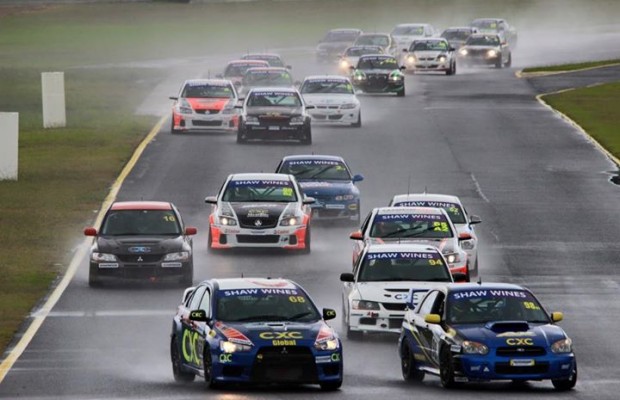Production-based racing cars are so involving, rewarding, and approachable that even some of the seasoned professionals prefer them to the thoroughbreds. Keiichi Tsuchiya once remarked on the challenge of the ’95 NSX GT1, saying, “The driver must control the front grip and the rear weight in order to keep the car going steady at high speeds, which is exactly what you need to do with the road-going model.”
“The common characteristic of a production car, is that it possesses roughness and imperfect handling properties. The limit might be set at a high level, but once an experienced diver takes it beyond that limit, the difficulty of controlling such a car turns to pure joy,” grinned Tsuchiya. While production cars might not be as responsive or boast the same levels of performance, wrangling them is part of the appeal.

Fortunately, production cars are generally a little easier to manage in the rain thanks to slightly softer edges.
Production cars don’t often have the outright rigidity of a prototype or a powerful single seater, and while this obviously means they don’t have the outright grip, it also means they’re somewhat friendlier towards the ragged edge of adhesion. Touring car drivers can get away with outrageous slides and still go quickly, and there isn’t quite the same emphasis on precision. They’re window between slip and grip is usually a little wider, and therefore they require a more assertive touch. To understand the technique, think of strumming a guitar as opposed to playing a succession of perfectly-picked 16th notes.
Because production-based cars aren’t as rigid, they transfer weight slightly slower than the thoroughbreds. This means a driver needs to time their inputs so as not to overwhelm the tires before they’re properly loaded. Before a driver can brake at the limit of the tires, they must ramp up pedal pressure somewhat progressively so the suspension compresses slightly and the tires are pressed into the pavement: known in racing parlance as “taking a set.”

Making sure the car leans gently onto its tires is an integral part of making the production car go quickly.
That isn’t to say production based cars are sluggish; production-based cars simply operate differently and have different constraints. While they’re less responsive than an Indycar or an LMP machine, they are usually quite robust and less dependent on aerodynamics for their speed. This means they can bang wheels and hop curbs with less consequence—in fact, often drivers will use the curbs to help their production-based car rotate into the corner.
Production cars are not comforting and easier to drive, however. Their cornering speeds might not be as high, but with slicks and wings, they can generate forces in excess of 2 gs, and the heat inside a closed cockpit is unbearable. Though the glamorous drivers in Formula 1 get all the recognition where fitness is concerned, the fellas sweating away under those tin roofs—especially those with a rotary engine in front of them—have their work cut out for them and must do some sauna training if they hope to last ninety minutes in their mobile oven.





















